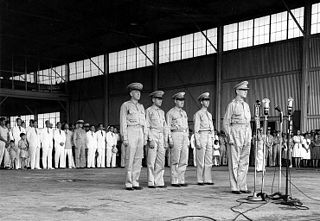
United States Army Forces in the Far East (USAFFE) was a military formation of the United States Army active from 1941 to 1946. The new command's headquarters was created on 26 July 1941, at No. 1, Calle Victoria, Manila, Luzon, the Philippines, with General Douglas MacArthur as commander. The Chief of Staff was Brigadier General Richard K. Sutherland and the Deputy Chief of Staff was Lieutenant Colonel Richard J. Marshall. The core of this command was drawn from the Office of the Military Advisor to the Commonwealth Government of the Philippines.

The Far East Air Force (FEAF) was the military aviation organization of the United States Army in the Philippines just prior to and at the beginning of World War II. Formed on 16 November 1941, FEAF was the predecessor of the Fifth Air Force of the United States Army Air Forces and the United States Air Force.

Nichols Field was a U.S. military airfield located south of Manila in Pasay and Parañaque, Metro Manila, Luzon, the Philippines. The complex is located at Andrews Avenue by the north, Domestic Road by the west, NAIA Road and Ninoy Aquino Avenue by the southwest, Multinational Avenue by the south, South Luzon Expressway and the Metro Manila Skyway by the east, and Sales Street by the northeast.

The Philippines campaign, also known as the Battle of the Philippines or the Fall of the Philippines, was the invasion of the Philippines by the Empire of Japan and the defense of the islands by United States and the Philippine Armies during World War II.

The Battle of Bataan was fought by the United States and the Philippine Commonwealth against Japan during World War II. The battle represented the most intense phase of the Japanese invasion of the Philippines during World War II. In January 1942, forces of the Imperial Japanese Army and Navy invaded Luzon along with several islands in the Philippine Archipelago after the bombing of the American naval base at Pearl Harbor.
The Commonwealth of the Philippines was attacked by the Empire of Japan on 8 December 1941, nine hours after the attack on Pearl Harbor. Although it was governed by a semi-independent commonwealth government, the United States of America controlled the Philippines at the time and possessed important military bases there. The combined Filipino-American army was defeated in the Battle of Bataan, which saw many war crimes commited and the Battle of Corregidor in April 1942, but guerrilla resistance against the Japanese continued throughout the war. Uncaptured Filipino army units, a communist insurgency, and supporting American agents all played a role in the resistance. Due to the huge number of islands, the Japanese never occupied many of the smaller and more minor islands. The Japanese control over the countryside and smaller towns were often tenuous at best.

General Sir James Aylmer Lowthorpe Haldane, was a Scottish soldier who rose to high rank in the British Army.
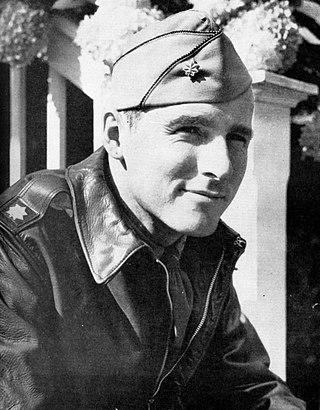
William Edwin Dyess was an officer of the United States Army Air Forces during World War II. He was captured after the Allied loss at the Battle of Bataan and endured the subsequent Bataan Death March. After a year in captivity, Dyess escaped and spent three months on the run before being evacuated from the Philippines by a U.S. submarine. Once back in the U.S., he recounted the story of his capture and imprisonment, providing the first widely published eye-witness account of the brutality of the death march. He returned to duty in the Army Air Forces, but was killed in a training accident months later.

Del Carmen Airfield is a former United States Army Air Forces airfield on Luzon in the Philippines. It was overrun by the Imperial Japanese Army during the Battle of the Philippines (1942).

The 34th Pursuit Squadron is an inactive United States Air Force unit. It was wiped out in the Battle of the Philippines (1941–42). The survivors fought as infantry during Battle of Bataan and after their surrender, were subjected to the Bataan Death March, although some did escape to Australia. The unit was never remanned or equipped. It was carried as an active unit until 2 April 1946.
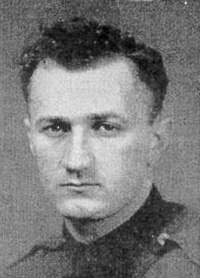
Samuel Charles Grashio was a United States Army Air Forces pilot who was captured by the Japanese in World War II. He survived the Bataan Death March and participated in the only successful mass escape from a Japanese prison camp.
The Philippine Department Air Force was a military formation of the United States Army Air Forces.
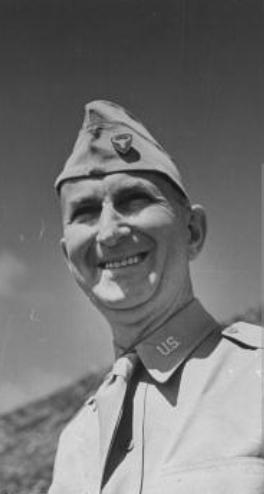
George Marshall Parker Jr. was an officer of the United States Army with the rank of major general. General Parker commanded the Philippine II Corps during the Battle of Bataan.

William Fletcher Sharp was a United States Army major general.
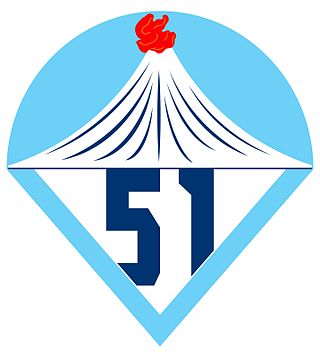
The 51st Infantry Division was a division of the Philippine Army under the United States Army Forces in the Far East (USAFFE).

The 21st Infantry Division was one of the 10 reserve division of the Philippine Army mobilized under the United States Army Forces in the Far East (USAFFE). The unit was involved in the delaying action against the Japanese invasion in the plains of Central Luzon, and the Battle of Bataan in 1942.

The 11th Infantry Division was one the reserve division of the Philippine Army that was mobilized in September 1941 under the United States Army Forces in the Far East (USAFFE).
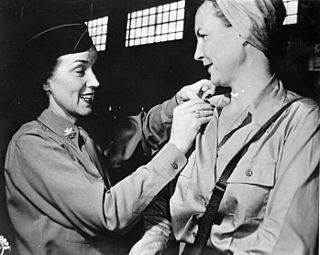
Lieutenant Colonel Juanita Redmond Hipps was a US Army nurse during World War II. She was present in the Philippines during the early part of the war and was regarded as one of the Angels of Bataan. A bestselling book she wrote about her experiences formed the background for the 1943 war movie So Proudly We Hail! Hipps helped to establish the United States Air Force's flight nurse program. She remained with the army until her retirement in 1969 and traveled the world on postings alongside her husband, a US Air Force general. The US Air Force Association's highest award for nursing is named in her honor.
The North Luzon Force was a corps-sized grouping of the U.S.-sponsored Philippine Army, defeated in battle against the Japanese in 1941–42.
Luzon Force or Bataan Defense Force is a short-lived Field Army size unit created in the Philippines after the restructure of command organized by General Douglas MacArthur commander of US Army Forces in the Far East (USAFFE). He wished to control the 4 Commands from Australia with its representative in Corregidor Island. Major General Jonathan M. Wainwright IV was selected to command as the senior general officer in Bataan peninsula.

















